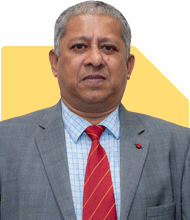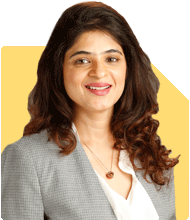Ramalingam Kalirajan |8459 Answers |Ask -Follow
Mutual Funds, Financial Planning Expert - Answered on Jul 10, 2024
He has an MBA in finance from the University of Madras and is a certified financial planner.
He is the director and chief financial planner at Holistic Investment, a Chennai-based firm that offers financial planning and wealth management advice.... more

I am 29 years old.I have a personal loan of 15lac going on will finish on 2029.My monthly income is 27000 on cash after emi, ppf deduction. Im retiring on 2037.How can I acheive 1cr before my retirement.? Where can i invest to achieve financial freedom after retirement.? Waiting ur guidance.
Evaluating Current Financial Situation
Monthly Income and Obligations
You earn Rs. 27,000 monthly after EMI and PPF deductions. You have a personal loan of Rs. 15 lakh, which will be paid off by 2029.
Retirement Plan
You plan to retire in 2037. This gives you around 14 years to build your corpus. Let’s explore how to achieve your goal.
Importance of Starting Early
Power of Compounding
Starting early allows your investments to grow through compounding. Compounding helps your investment grow exponentially over time.
Discipline in Investing
Consistent investing is crucial. Setting aside a fixed amount each month will help you achieve your goal.
Investment Options
Mutual Funds
Mutual funds can be an excellent option for building your retirement corpus.
Equity Mutual Funds
Equity mutual funds invest in stocks. They offer higher returns but come with higher risks. Over a long period, they can help you build a substantial corpus.
Debt Mutual Funds
Debt mutual funds invest in fixed-income securities. They offer stable returns with lower risk. They can be a good option for short-term goals.
Hybrid Mutual Funds
Hybrid mutual funds invest in a mix of equity and debt. They provide a balance of risk and return, suitable for moderate risk tolerance.
Systematic Investment Plan (SIP)
Investing through SIPs is a disciplined approach. You can invest a fixed amount regularly, which helps in averaging out the cost and reduces the risk of market volatility.
Evaluating Mutual Funds
Professional Management
Mutual funds are managed by professional fund managers. They have the expertise to make informed investment decisions, which can lead to better returns.
Diversification
Mutual funds offer diversification by investing in a mix of assets. This reduces risk and helps in achieving steady returns.
Liquidity
Mutual funds are highly liquid. You can redeem your investments easily, providing quick access to your money when needed.
Convenience
Investing in mutual funds through SIPs is convenient. It automates the investment process, ensuring disciplined investing without worrying about market timing.
Risk and Considerations
Market Risk
Mutual funds are subject to market risk. The value of your investments can fluctuate based on market conditions. It’s important to have a long-term perspective.
Expense Ratios
Mutual funds charge an expense ratio for managing the fund. Higher expense ratios can impact your returns. Choose funds with reasonable expense ratios.
Performance Variability
Not all mutual funds perform consistently. It’s essential to review fund performance regularly and make necessary adjustments to your portfolio.
Steps to Achieve Rs. 1 Crore
Assess Financial Goals
Understand your financial goals and risk tolerance. This will help you choose the right investment options.
Choose the Right Funds
Select mutual funds that align with your goals and risk profile. For long-term goals, equity funds can be suitable.
Increase Investment Gradually
As your income increases, try to increase your SIP amount. This will help you achieve your goal faster.
Consult a Certified Financial Planner (CFP)
A CFP can provide personalized advice based on your financial situation. They can help you choose the right funds and create a comprehensive financial plan.
Power of Compounding
Growth Over Time
Compounding allows your investment to grow over time. Reinvesting your returns helps your money earn returns on returns, leading to exponential growth.
Starting Early
The earlier you start investing, the more time your money has to grow. Consistent investing can significantly impact your corpus by the time you need it.
It’s great that you are proactive about your retirement planning. Understanding the importance of starting early and disciplined investing shows your commitment to securing your financial future.
Final Insights
Achieving Rs. 1 crore before retirement is possible with disciplined investing and proper planning. Evaluate your financial goals, choose the right investment options, and stay consistent. Consulting a CFP can provide personalized guidance and ensure you are on the right track.
Remember, the goal is to align your investments with your financial goals and risk tolerance. Stay informed, review your investments regularly, and seek professional advice when needed.
Best Regards,
K. Ramalingam, MBA, CFP
Chief Financial Planner
www.holisticinvestment.in
You may like to see similar questions and answers below
Ramalingam Kalirajan |8459 Answers |Ask -Follow
Mutual Funds, Financial Planning Expert - Answered on Apr 16, 2024
Ramalingam Kalirajan |8459 Answers |Ask -Follow
Mutual Funds, Financial Planning Expert - Answered on May 06, 2024
Ramalingam Kalirajan |8459 Answers |Ask -Follow
Mutual Funds, Financial Planning Expert - Answered on Jun 29, 2024
Milind Vadjikar |1236 Answers |Ask -Follow
Insurance, Stocks, MF, PF Expert - Answered on Sep 26, 2024
Dr Nagarajan J S K |406 Answers |Ask -Follow
NEET, Medical, Pharmacy Careers - Answered on May 16, 2025

Based on my understanding, no one usually requests a birth certificate at this age. Your inquiry relates to the period before and after independence. In those days, they would accept the SSLC book if you didn't have a birth certificate. However, I am not sure if that was the case during your time.
Instead, you can present your Aadhaar card, which likely includes your original date of birth. You can utilize that information.
If my response doesn't fully address your concerns, I recommend consulting a Notary Public for further assistance.
BEST WISHES.
THANK YOU SIR.
with regards
Prof Suvasish Mukhopadhyay |651 Answers |Ask -Follow
Career Counsellor - Answered on May 16, 2025
Prof Suvasish Mukhopadhyay |651 Answers |Ask -Follow
Career Counsellor - Answered on May 16, 2025
Radheshyam Zanwar |1634 Answers |Ask -Follow
MHT-CET, IIT-JEE, NEET-UG Expert - Answered on May 16, 2025
Radheshyam Zanwar |1634 Answers |Ask -Follow
MHT-CET, IIT-JEE, NEET-UG Expert - Answered on May 16, 2025
Ashwini Dasgupta |107 Answers |Ask -Follow
Personality Development Expert, Career Coach - Answered on May 16, 2025
Ramalingam Kalirajan |8459 Answers |Ask -Follow
Mutual Funds, Financial Planning Expert - Answered on May 16, 2025
Ramalingam Kalirajan |8459 Answers |Ask -Follow
Mutual Funds, Financial Planning Expert - Answered on May 16, 2025
Milind Vadjikar |1236 Answers |Ask -Follow
Insurance, Stocks, MF, PF Expert - Answered on May 16, 2025
Milind Vadjikar |1236 Answers |Ask -Follow
Insurance, Stocks, MF, PF Expert - Answered on May 16, 2025
























